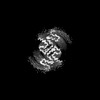+ Open data
Open data
- Basic information
Basic information
| Entry | 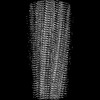 | |||||||||
|---|---|---|---|---|---|---|---|---|---|---|
| Title | BTA-2-bound E46K alpha-synuclein fibrils | |||||||||
 Map data Map data | ||||||||||
 Sample Sample |
| |||||||||
 Keywords Keywords | amyloid fibril / complex / PROTEIN FIBRIL | |||||||||
| Function / homology |  Function and homology information Function and homology informationregulation of phospholipase activity / negative regulation of monooxygenase activity / negative regulation of mitochondrial electron transport, NADH to ubiquinone / positive regulation of glutathione peroxidase activity / neutral lipid metabolic process / regulation of acyl-CoA biosynthetic process / negative regulation of dopamine uptake involved in synaptic transmission / negative regulation of norepinephrine uptake / positive regulation of SNARE complex assembly / positive regulation of hydrogen peroxide catabolic process ...regulation of phospholipase activity / negative regulation of monooxygenase activity / negative regulation of mitochondrial electron transport, NADH to ubiquinone / positive regulation of glutathione peroxidase activity / neutral lipid metabolic process / regulation of acyl-CoA biosynthetic process / negative regulation of dopamine uptake involved in synaptic transmission / negative regulation of norepinephrine uptake / positive regulation of SNARE complex assembly / positive regulation of hydrogen peroxide catabolic process / supramolecular fiber / negative regulation of transporter activity / mitochondrial membrane organization / negative regulation of chaperone-mediated autophagy / regulation of synaptic vesicle recycling / regulation of reactive oxygen species biosynthetic process / negative regulation of platelet-derived growth factor receptor signaling pathway / positive regulation of protein localization to cell periphery / negative regulation of exocytosis / regulation of glutamate secretion / response to iron(II) ion / SNARE complex assembly / positive regulation of neurotransmitter secretion / dopamine biosynthetic process / regulation of norepinephrine uptake / regulation of locomotion / synaptic vesicle priming / mitochondrial ATP synthesis coupled electron transport / positive regulation of inositol phosphate biosynthetic process / regulation of macrophage activation / negative regulation of microtubule polymerization / synaptic vesicle transport / dynein complex binding / positive regulation of receptor recycling / dopamine uptake involved in synaptic transmission / protein kinase inhibitor activity / regulation of dopamine secretion / negative regulation of thrombin-activated receptor signaling pathway / cuprous ion binding / positive regulation of endocytosis / synaptic vesicle exocytosis / positive regulation of exocytosis / response to magnesium ion / cysteine-type endopeptidase inhibitor activity involved in apoptotic process / kinesin binding / synaptic vesicle endocytosis / regulation of presynapse assembly / response to type II interferon / negative regulation of serotonin uptake / alpha-tubulin binding / inclusion body / supramolecular fiber organization / phospholipid metabolic process / cellular response to copper ion / cellular response to epinephrine stimulus / axon terminus / Hsp70 protein binding / response to interleukin-1 / SNARE binding / positive regulation of release of sequestered calcium ion into cytosol / adult locomotory behavior / excitatory postsynaptic potential / fatty acid metabolic process / positive regulation of protein serine/threonine kinase activity / phosphoprotein binding / negative regulation of protein kinase activity / protein tetramerization / long-term synaptic potentiation / regulation of transmembrane transporter activity / microglial cell activation / regulation of long-term neuronal synaptic plasticity / synapse organization / ferrous iron binding / positive regulation of peptidyl-serine phosphorylation / protein destabilization / PKR-mediated signaling / tau protein binding / receptor internalization / phospholipid binding / synaptic vesicle membrane / positive regulation of inflammatory response / actin cytoskeleton / actin binding / growth cone / cell cortex / cellular response to oxidative stress / chemical synaptic transmission / neuron apoptotic process / molecular adaptor activity / response to lipopolysaccharide / negative regulation of neuron apoptotic process / histone binding / amyloid fibril formation / lysosome / oxidoreductase activity / transcription cis-regulatory region binding / postsynapse / positive regulation of apoptotic process / copper ion binding / response to xenobiotic stimulus Similarity search - Function | |||||||||
| Biological species |  Homo sapiens (human) Homo sapiens (human) | |||||||||
| Method | helical reconstruction / cryo EM / Resolution: 3.4 Å | |||||||||
 Authors Authors | Liu KE / Tao YQ / Li D / Liu C | |||||||||
| Funding support | 1 items
| |||||||||
 Citation Citation |  Journal: Proc Natl Acad Sci U S A / Year: 2024 Journal: Proc Natl Acad Sci U S A / Year: 2024Title: Binding adaptability of chemical ligands to polymorphic α-synuclein amyloid fibrils. Authors: Kaien Liu / Youqi Tao / Qinyue Zhao / Wencheng Xia / Xiang Li / Shenqing Zhang / Yuxuan Yao / Huaijiang Xiang / Chao Han / Li Tan / Bo Sun / Dan Li / Ang Li / Cong Liu /  Abstract: α-synuclein (α-syn) assembles into structurally distinct fibril polymorphs seen in different synucleinopathies, such as Parkinson's disease and multiple system atrophy. Targeting these unique ...α-synuclein (α-syn) assembles into structurally distinct fibril polymorphs seen in different synucleinopathies, such as Parkinson's disease and multiple system atrophy. Targeting these unique fibril structures using chemical ligands holds diagnostic significance for different disease subtypes. However, the molecular mechanisms governing small molecules interacting with different fibril polymorphs remain unclear. Here, we investigated the interactions of small molecules belonging to four distinct scaffolds, with different α-syn fibril polymorphs. Using cryo-electron microscopy, we determined the structures of these molecules when bound to the fibrils formed by E46K mutant α-syn and compared them to those bound with wild-type α-syn fibrils. Notably, we observed that these ligands exhibit remarkable binding adaptability, as they engage distinct binding sites across different fibril polymorphs. While the molecular scaffold primarily steered the binding locations and geometries on specific sites, the conjugated functional groups further refined this adaptable binding by fine-tuning the geometries and binding sites. Overall, our finding elucidates the adaptability of small molecules binding to different fibril structures, which sheds light on the diagnostic tracer and drug developments tailored to specific pathological fibril polymorphs. | |||||||||
| History |
|
- Structure visualization
Structure visualization
| Supplemental images |
|---|
- Downloads & links
Downloads & links
-EMDB archive
| Map data |  emd_60226.map.gz emd_60226.map.gz | 22.8 MB |  EMDB map data format EMDB map data format | |
|---|---|---|---|---|
| Header (meta data) |  emd-60226-v30.xml emd-60226-v30.xml emd-60226.xml emd-60226.xml | 14 KB 14 KB | Display Display |  EMDB header EMDB header |
| FSC (resolution estimation) |  emd_60226_fsc.xml emd_60226_fsc.xml | 9.2 KB | Display |  FSC data file FSC data file |
| Images |  emd_60226.png emd_60226.png | 59.6 KB | ||
| Filedesc metadata |  emd-60226.cif.gz emd-60226.cif.gz | 5 KB | ||
| Others |  emd_60226_half_map_1.map.gz emd_60226_half_map_1.map.gz emd_60226_half_map_2.map.gz emd_60226_half_map_2.map.gz | 49.6 MB 49.6 MB | ||
| Archive directory |  http://ftp.pdbj.org/pub/emdb/structures/EMD-60226 http://ftp.pdbj.org/pub/emdb/structures/EMD-60226 ftp://ftp.pdbj.org/pub/emdb/structures/EMD-60226 ftp://ftp.pdbj.org/pub/emdb/structures/EMD-60226 | HTTPS FTP |
-Validation report
| Summary document |  emd_60226_validation.pdf.gz emd_60226_validation.pdf.gz | 942.2 KB | Display |  EMDB validaton report EMDB validaton report |
|---|---|---|---|---|
| Full document |  emd_60226_full_validation.pdf.gz emd_60226_full_validation.pdf.gz | 941.7 KB | Display | |
| Data in XML |  emd_60226_validation.xml.gz emd_60226_validation.xml.gz | 15.4 KB | Display | |
| Data in CIF |  emd_60226_validation.cif.gz emd_60226_validation.cif.gz | 21.1 KB | Display | |
| Arichive directory |  https://ftp.pdbj.org/pub/emdb/validation_reports/EMD-60226 https://ftp.pdbj.org/pub/emdb/validation_reports/EMD-60226 ftp://ftp.pdbj.org/pub/emdb/validation_reports/EMD-60226 ftp://ftp.pdbj.org/pub/emdb/validation_reports/EMD-60226 | HTTPS FTP |
-Related structure data
| Related structure data |  8zliMC  8x7lC  8x7mC  8x7oC  8x7pC  8x7qC  8x7rC  8zloC 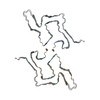 8zlpC  8zmyC M: atomic model generated by this map C: citing same article ( |
|---|---|
| Similar structure data | Similarity search - Function & homology  F&H Search F&H Search |
- Links
Links
| EMDB pages |  EMDB (EBI/PDBe) / EMDB (EBI/PDBe) /  EMDataResource EMDataResource |
|---|
- Map
Map
| File |  Download / File: emd_60226.map.gz / Format: CCP4 / Size: 64 MB / Type: IMAGE STORED AS FLOATING POINT NUMBER (4 BYTES) Download / File: emd_60226.map.gz / Format: CCP4 / Size: 64 MB / Type: IMAGE STORED AS FLOATING POINT NUMBER (4 BYTES) | ||||||||||||||||||||||||||||||||||||
|---|---|---|---|---|---|---|---|---|---|---|---|---|---|---|---|---|---|---|---|---|---|---|---|---|---|---|---|---|---|---|---|---|---|---|---|---|---|
| Projections & slices | Image control
Images are generated by Spider. | ||||||||||||||||||||||||||||||||||||
| Voxel size | X=Y=Z: 0.83 Å | ||||||||||||||||||||||||||||||||||||
| Density |
| ||||||||||||||||||||||||||||||||||||
| Symmetry | Space group: 1 | ||||||||||||||||||||||||||||||||||||
| Details | EMDB XML:
|
-Supplemental data
-Half map: #1
| File | emd_60226_half_map_1.map | ||||||||||||
|---|---|---|---|---|---|---|---|---|---|---|---|---|---|
| Projections & Slices |
| ||||||||||||
| Density Histograms |
-Half map: #2
| File | emd_60226_half_map_2.map | ||||||||||||
|---|---|---|---|---|---|---|---|---|---|---|---|---|---|
| Projections & Slices |
| ||||||||||||
| Density Histograms |
- Sample components
Sample components
-Entire : BTA-2-bound E46K alpha-synuclein fibril
| Entire | Name: BTA-2-bound E46K alpha-synuclein fibril |
|---|---|
| Components |
|
-Supramolecule #1: BTA-2-bound E46K alpha-synuclein fibril
| Supramolecule | Name: BTA-2-bound E46K alpha-synuclein fibril / type: complex / ID: 1 / Parent: 0 / Macromolecule list: #1 |
|---|---|
| Source (natural) | Organism:  Homo sapiens (human) Homo sapiens (human) |
-Macromolecule #1: Alpha-synuclein
| Macromolecule | Name: Alpha-synuclein / type: protein_or_peptide / ID: 1 / Number of copies: 10 / Enantiomer: LEVO |
|---|---|
| Source (natural) | Organism:  Homo sapiens (human) Homo sapiens (human) |
| Molecular weight | Theoretical: 5.402157 KDa |
| Recombinant expression | Organism:  |
| Sequence | String: KKGVVHGVAT VAEKTKEQVT NVGGAVVTGV TAVAQKTVEG AGSIAAATGF VKKDQ UniProtKB: Alpha-synuclein |
-Macromolecule #2: ~{N},~{N}-dimethyl-4-(6-methyl-1,3-benzothiazol-2-yl)aniline
| Macromolecule | Name: ~{N},~{N}-dimethyl-4-(6-methyl-1,3-benzothiazol-2-yl)aniline type: ligand / ID: 2 / Number of copies: 10 / Formula: A1L13 |
|---|---|
| Molecular weight | Theoretical: 268.377 Da |
-Experimental details
-Structure determination
| Method | cryo EM |
|---|---|
 Processing Processing | helical reconstruction |
| Aggregation state | helical array |
- Sample preparation
Sample preparation
| Buffer | pH: 7.5 |
|---|---|
| Vitrification | Cryogen name: ETHANE |
- Electron microscopy
Electron microscopy
| Microscope | FEI TITAN KRIOS |
|---|---|
| Image recording | Film or detector model: GATAN K3 BIOQUANTUM (6k x 4k) / Average electron dose: 55.0 e/Å2 |
| Electron beam | Acceleration voltage: 300 kV / Electron source:  FIELD EMISSION GUN FIELD EMISSION GUN |
| Electron optics | Illumination mode: FLOOD BEAM / Imaging mode: BRIGHT FIELD / Nominal defocus max: 2.0 µm / Nominal defocus min: 1.0 µm |
| Experimental equipment |  Model: Titan Krios / Image courtesy: FEI Company |
 Movie
Movie Controller
Controller



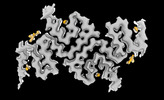



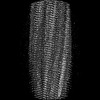





 Z (Sec.)
Z (Sec.) Y (Row.)
Y (Row.) X (Col.)
X (Col.)
